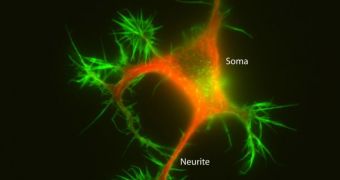When a child is born, the best possible way to describe what their brain looks like is chaos. Neural networks are not fully formed yet, and the general aspect is one of disarray. However, out of that chaos, highly ordered neurons begin to pop up, and eventually form centers with very specific tasks. The mechanism underlying these changes has eluded scientists for a long time, but they have recently managed to understand the functional development of nerve-cell contacts, AlphaGalileo reports.
The work was conducted by a team of scientists at the University of Helsinki, led by Academy Research Fellow Sari Lauri. The investigators have been studying newborn neural networks for years, and this is among the first studies they have published since. Details of the work appear in an early September issue of the esteemed Journal of Neuroscience, as a leading article.
The development mechanism the team has revealed plays a huge role in turning large numbers of early synapses into stronger, inter-neural connections. The number and strength of synapses in the average brain dictates how fast it operates and also other abilities such as the ease of learning, how to make correlations, and pattern recognition, among others. The growth factor BDNF was identified as playing an important role in triggering a cascade of events that eventually led to the release of the neurotransmitter glutamate.
Additionally, BDNF was found to be the main inhibitor to the good functioning and expression of kainate receptors, which play an important part in inhibiting the development of synaptic “preforms.” The team also notes that the brain, regardless of its age, is responsible for its own development. That is to say, the electrical activity of the wake cortex triggers the cascade process that features the BDNF protein. The early neural networks were also proven to be able to considerably reshape and restructure their function, a trait known among experts as plasticity.
Lauri says that the new work may provide neuroscientists one day with a better understanding of how some brain conditions stem from glitches that occur in the earliest developmental stages of the cortex. Diseases such as childhood epilepsy could also benefit from new, more advanced treatments that could be devised based on the new study.

 14 DAY TRIAL //
14 DAY TRIAL //